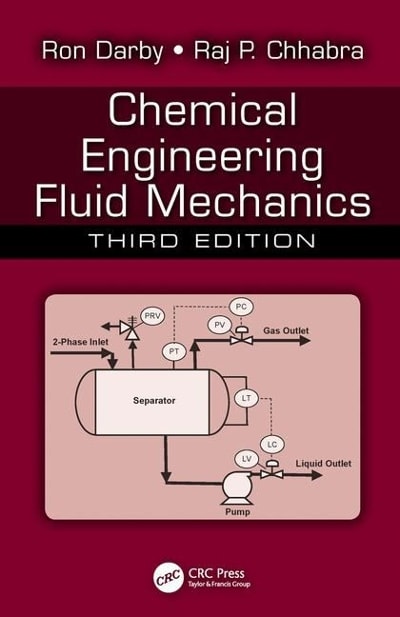In a distillation column, vapor is bubbled through the liquid to provide good contact between the two
Question:
In a distillation column, vapor is bubbled through the liquid to provide good contact between the two phases. The bubbles are formed when the vapor passes upward through a hole (orifice) in a plate (tray) that is in contact with the liquid. The size of the bubbles depends upon the diameter of the orifice, the velocity of the vapor through the orifice, the viscosity and density of the liquid, and the surface tension between the vapor and the liquid.
(a) Determine the dimensionless groups required to completely describe this system, in such a manner that the bubble diameter and the surface tension do not appear in the same group.
(b) You want to find out what size bubbles would be formed by a hydrocarbon vapor passing through a $1 / 4 \mathrm{in}$. orifice at a velocity of $2 \mathrm{ft} / \mathrm{s}$, in contact with a liquid having a viscosity of $4 \mathrm{cP}$ and a density of $0.95 \mathrm{~g} / \mathrm{cm}^{3}$ (the surface tension is $30 \mathrm{dyn} / \mathrm{cm}$ ). To do this, you run a lab experiment using air and water (with a surface tension of $60 \mathrm{dyn} / \mathrm{cm}$ ).
(i) What size orifice should you use, and what should the air velocity through the orifice be?
(ii) You design and run this experiment and find that the air bubbles are $0.1 \mathrm{in}$. in diameter.
What size would the vapor bubbles be in the organic fluid above the $1 / 4$ in. orifice?
Step by Step Answer:

Chemical Engineering Fluid Mechanics
ISBN: 9781498724432
3rd Edition
Authors: Ron Darby, Raj P Chhabra





